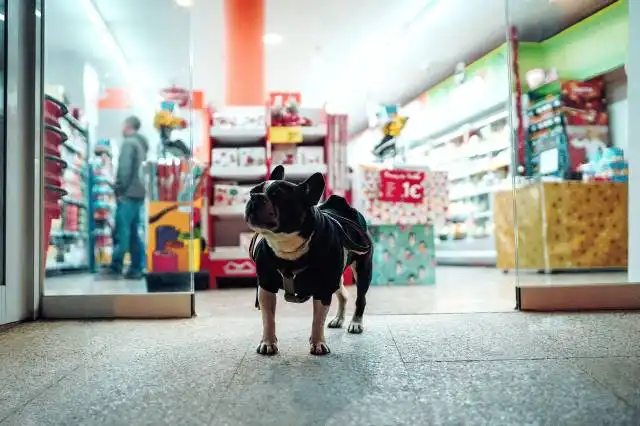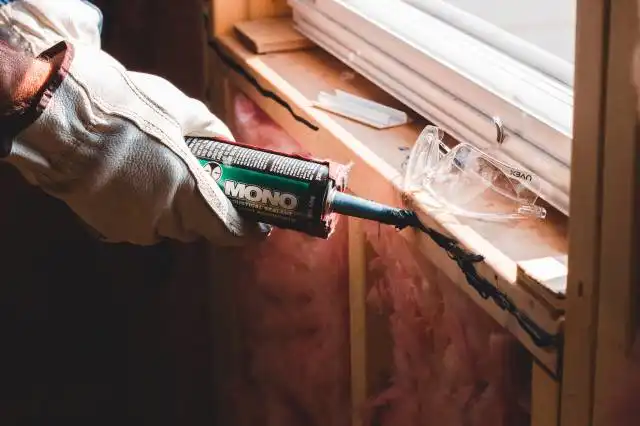Start a Pet Clothing Store
Transforming Love for Animals into a Fur-Fabulous Venture!
| Updated


PET CLOTHING STORE
Unleash your entrepreneurial spirit with a pet clothing store, a business perfect for the animal lover with a flair for fashion! Your start-up will work creating stylish and comfortable clothing garments for pets, ranging from dashing doggie sweaters to classy cat collars. Let your creativity bloom as you design inventive pieces that not only keep pets warm and safe but also make them the talk of the park. Amidst wagging tails and purring clientele, this venture combines a keen eye for trends and attention to animal needs in a whirlwind of fur-friendly fun!
Jump to Business Plan
RELATED BUSINESS IDEAS
Browse ALL Pets & Animals Business Ideas
Discover Your Perfect Domain
Unlock the door to your online success with our hand-picked selection of premium domain names. Whether you're starting a new venture or rebranding an existing one, the right domain can set the tone for your digital presence. Browse through our curated list, each with its unique potential to enhance your brand's visibility and credibility.
PET CLOTHING STORE MINI BUSINESS PLAN
This a quick reality check to help you identify the strengths and weaknesses of your business concept before you dive in.
Business Idea: Pet Clothing Store
Expected Percent Margin:
- Gross Margin: Approximately 60-80%
- Net Profit Margin: Approximately 10-20%
Earnings Expectations:
- Daily Earnings: $100 - $500 (based on selling 10-50 items at $10 - $20 price range)
- Weekly Earnings: $700 - $3,500
- Monthly Earnings: $2,800 - $14,000
- Annual Earnings: $33,600 - $168,000
Actions Needed to Achieve These Numbers:
Inventory Management:
- Initial Investment: Approximately $10,000 for a diverse and trendy pet clothing collection.
- Supplier Relations: Negotiate for best rates and terms from reliable suppliers.
Marketing and Customer Acquisition:
- Social Media & Online Selling Platforms: Regularly post and sell on popular platforms like Instagram, Etsy, and Amazon.
- Local Partnerships: Collaborate with local pet shops, groomers, and vet clinics for referrals.
Sales and Customer Experience:
- Store Design: Ensure a pet-friendly environment to encourage try-ons.
- Customer Service: Provide excellent service to encourage repeat customers.
Cost Control:
- Store Location: Choose a location where rent doesn't exceed 10% of expected monthly sales.
- Utilities and Maintenance: Aim to keep this under $500 per month.
Business Operations:
- Store Hours: Operate at least 6 days a week, 8-10 hours per day.
- Transaction Volume: Aim to sell at least 10-20 items per day.
Keep in mind, these are generalized estimations and results may vary. Seek out professional consultation when drafting your business plan.
NOT WHAT YOU HAD IN MIND? Here are more ideas



Browse ALL Pets & Animals Business Ideas
Grab Your Business Website Name
Before you get caught up in the whirlwind of setting up your business, invest in a domain name. It's a small but significant step that lays the foundation for your brand and makes it easier for customers to find and trust you. Just like you wouldn't build a house without securing the land first, don't build a business without securing your domain name.
"Why? Can't that wait?" Here's why it shouldn't
Step 1: Determine if the Business is Right for You
Breakdown of Startup Expenses
When starting a pet clothing store, it is important to have a thorough understanding of the startup costs associated with the business. This includes the cost of the physical space, the cost of inventory, the cost of marketing materials, and the cost of any necessary licenses or permits. Additionally, it is important to factor in the cost of any necessary equipment, such as sewing machines, fabric, and other supplies. It is also important to consider the cost of any necessary personnel, such as a store manager or sales staff. Finally, it is important to consider the cost of any necessary insurance.
Breakdown of Ongoing Expenses
In addition to startup costs, it is important to understand the ongoing expenses associated with running a pet clothing store. This includes the cost of rent, utilities, inventory, and marketing materials. Additionally, it is important to factor in the cost of any personnel, such as a store manager or sales staff. It is also important to consider the cost of any necessary insurance. Additionally, it is important to factor in the cost of any necessary repairs or maintenance to the physical space or equipment.
Examples of Ways to Make Money
There are many ways to make money with a pet clothing store. One way is to sell pet clothing directly to customers. This can be done through an online store, a physical store, or a combination of both. Additionally, pet clothing can be sold through wholesale distributors or other retailers. Additionally, pet clothing can be sold through pet-related events, such as pet shows or pet fairs. Finally, pet clothing can be sold through custom orders, such as personalized pet clothing or custom-made pet clothing.
Step 2: Name the Business
Naming a business is an important step in the process of starting a pet clothing store. It is important to choose a name that is memorable and reflects the mission of the business. When choosing a name, it is important to consider the type of clothing that will be sold, the target audience, and the overall message the business is trying to convey. Additionally, it is important to make sure that the name is not already in use by another business. Researching the availability of the name through the United States Patent and Trademark Office website is a great way to ensure that the name is not already in use. Additionally, it is important to make sure that the name is not too long or difficult to spell. A name that is too long or difficult to spell can make it difficult for customers to remember the business.
Another important factor to consider when naming the business is the domain name. It is important to make sure that the domain name is available and that it matches the name of the business. This will make it easier for customers to find the business online. Additionally, it is important to make sure that the domain name is easy to remember and type.
Finally, it is important to make sure that the name of the business is legally compliant. This means that the name must not infringe on any existing trademarks and must not contain any offensive language. It is important to research the name thoroughly to make sure that it is legally compliant.
Step 3: Create a Business Plan
Creating a business plan is an important step in starting a pet clothing store. A business plan should include a mission statement, a description of the products and services offered, a market analysis, a description of the target market, a description of the competition, a marketing plan, a financial plan, and a management plan.
The mission statement should be a brief description of the purpose of the business, such as providing fashionable and affordable pet clothing to pet owners. The description of the products and services should include the types of pet clothing that will be offered and any additional services that may be offered, such as custom pet clothing or pet accessories.
The market analysis should include an overview of the pet clothing industry, the size of the target market, the trends in the industry, and the potential for growth. The description of the target market should include the demographic characteristics of the target customers, such as age, gender, and income level. The description of the competition should include an overview of the competitors in the area and their strengths and weaknesses.
The marketing plan should include a description of the strategies that will be used to reach the target market, such as advertising, promotions, and public relations. The financial plan should include an estimate of the startup costs, an estimate of the ongoing costs, and a projection of the expected revenues. The management plan should include a description of the roles and responsibilities of the management team and the organizational structure of the business.
Step 4: Obtain Licenses and Permits
In order to open a pet clothing store, it is important to obtain the necessary licenses and permits. Depending on the state and local regulations, the types of licenses and permits that may be required include a business license, a seller’s permit, a zoning permit, and a health permit. It is important to check with the local government to determine which licenses and permits are necessary for the business. Additionally, it may be necessary to obtain a tax identification number and register the business with the state.
How to Obtain Licenses and Permits
Once the types of licenses and permits needed have been determined, the next step is to obtain them. The process of obtaining licenses and permits can vary depending on the state and local regulations. Generally, the process involves filling out the necessary paperwork and submitting it to the local government. Additionally, it may be necessary to pay a fee to obtain the licenses and permits. It is important to submit the paperwork and pay the fees in a timely manner to avoid any delays in opening the business.
Cost of Licenses and Permits
The cost of obtaining licenses and permits can vary depending on the state and local regulations. Generally, the cost of obtaining a business license and seller’s permit is relatively low. However, the cost of obtaining a zoning permit and health permit can be more expensive. Additionally, it may be necessary to pay an annual fee to maintain the licenses and permits. It is important to factor in the cost of obtaining and maintaining the licenses and permits when creating a budget for the business.
Step 5: Secure Financing
Securing financing is a crucial step in starting a pet clothing store. There are a few different sources of financing that entrepreneurs can consider when starting a business. The most common sources of financing for small businesses are personal savings, credit cards, bank loans, venture capital, and angel investors. Personal savings are the most common source of financing for small businesses, as it allows entrepreneurs to invest their own money into the business. Credit cards are also a popular option, as they allow entrepreneurs to borrow money from a financial institution and pay it back over time. Bank loans are another option, as they provide entrepreneurs with a lump sum of money to invest in their business. Venture capital and angel investors are also options for entrepreneurs who want to raise large amounts of money for their business.
Calculate Startup Costs
Once entrepreneurs have determined the sources of financing for their pet clothing store, they should calculate the startup costs. This includes the cost of purchasing inventory, renting a store space, and hiring employees. Additionally, entrepreneurs should factor in the cost of marketing, advertising, and any other necessary expenses to get the business off the ground. It is important to be realistic when calculating the startup costs, as this will help entrepreneurs decide how much money they need to raise.
Calculate Ongoing Expenses
In addition to startup costs, entrepreneurs should also calculate the ongoing expenses of running a pet clothing store. This includes the cost of purchasing inventory, paying employees, and paying rent. Additionally, entrepreneurs should factor in the cost of marketing, advertising, and any other necessary expenses to keep the business running. It is important to be realistic when calculating the ongoing expenses, as this will help entrepreneurs budget for the future.
Step 6: Find a Location
When choosing a location for a pet clothing store, there are several factors to consider. First, it is important to consider the size of the store. The size of the store will depend on the type of pet clothing that will be sold. If the store will be selling a wide variety of pet clothing, then a larger store may be necessary. Additionally, the location should be in an area with a high concentration of pet owners. This will help to ensure that the store will have a steady stream of customers. It is also important to consider the cost of renting a space for the store. The cost of rent can vary greatly depending on the area, so it is important to research the market before committing to a location. Finally, the store should be located in an area that is easily accessible to customers. This will make it easier for customers to find the store and make purchases.
Step 7: Stock the Store
When stocking the store, it is important to consider the types of pet clothing that will be offered. Popular items include sweaters, coats, and rain jackets. Additionally, pet owners are often looking for accessories such as hats, bandanas, and booties. Consider stocking items that are fashionable and of good quality. Additionally, it is important to stock items that are appropriate for the climate in the area.
Where to Source Products
When it comes to sourcing products, there are a few different options. One option is to purchase items from a wholesaler or manufacturer. This is often the most cost-effective option, as it allows the store owner to purchase items in bulk at a discounted rate. Another option is to purchase items from a local pet boutique or online store. This allows the store to offer unique items that may not be available from a wholesaler. Finally, it is possible to create custom items for the store. This can be done by hiring a designer or using a custom printing service.
Pricing
When pricing items, it is important to consider the cost of the item and the desired profit margin. Additionally, it is important to consider the prices of competitors in the area. This will help to ensure that the store is competitively priced. Additionally, it is important to consider the quality of the item when setting the price. Higher quality items should be priced higher than lower quality items.
Promotions
When it comes to promoting the store, there are a few different options. One option is to create a website and social media accounts for the store. This will allow customers to browse the store’s products and learn more about the store. Additionally, it is important to create promotional materials such as flyers and business cards. This will help to spread the word about the store and attract new customers. Finally, consider offering discounts and promotions to customers to encourage them to purchase items from the store.
Step 8: Market the Store
The best way to market a pet clothing store is to create a strong online presence. This can be done by creating a website, setting up social media accounts, and creating an email list. Additionally, it is important to create a strong SEO strategy to ensure that the store is easily found online. Additionally, it is important to invest in local advertising, such as flyers, posters, and radio ads. Finally, it is important to build relationships with local pet stores and groomers to help spread the word about the store.
Tips for Successful Marketing
When marketing the pet clothing store, it is important to focus on the unique aspects of the store. For example, if the store specializes in handmade pet clothing, it is important to emphasize this in the marketing materials. Additionally, it is important to create a strong brand identity and use it consistently across all marketing materials. Additionally, it is important to create content that is interesting and engaging for potential customers. Finally, it is important to track the success of the marketing efforts to ensure that the store is reaching the right audience.
Step 9: Track the Business
Tracking the business is an important step in the process of starting a pet clothing store. It is important to have a system in place to track the progress of the business and to measure the success of the store. This can be done by tracking sales, expenses, customer feedback, and other metrics. It is also important to track the performance of the store over time to ensure that it is meeting its goals.
Tools for Tracking the Business
There are many tools available to help track the progress of a pet clothing store. These include accounting software, customer relationship management (CRM) software, and analytics tools. Accounting software can be used to track sales and expenses, while CRM software can be used to track customer feedback and other metrics. Analytics tools can be used to track the performance of the store over time.
Benefits of Tracking the Business
Tracking the progress of the business is important for many reasons. It can help to identify areas of improvement and opportunities for growth. It can also help to identify potential problems before they become too large. Tracking the business can also help to ensure that the store is meeting its goals and that it is on track to reach its desired level of success.
Conclusion
Tracking the progress of a pet clothing store is an important step in the process of starting a business. There are many tools available to help track the progress of the store, and the benefits of tracking the business are numerous. By tracking the progress of the store, it can help to ensure that the store is meeting its goals and that it is on track to reach its desired level of success.
EXPLORE MORE CATEGORIES
Browse ALL Business Idea Categories
TAKE THE NEXT STEPS










